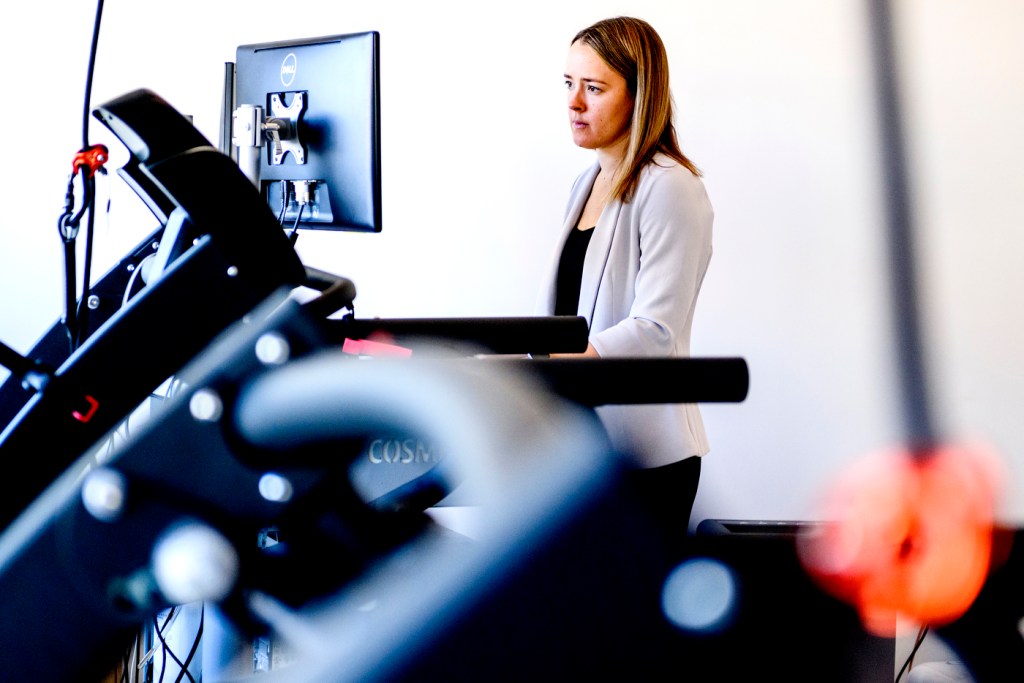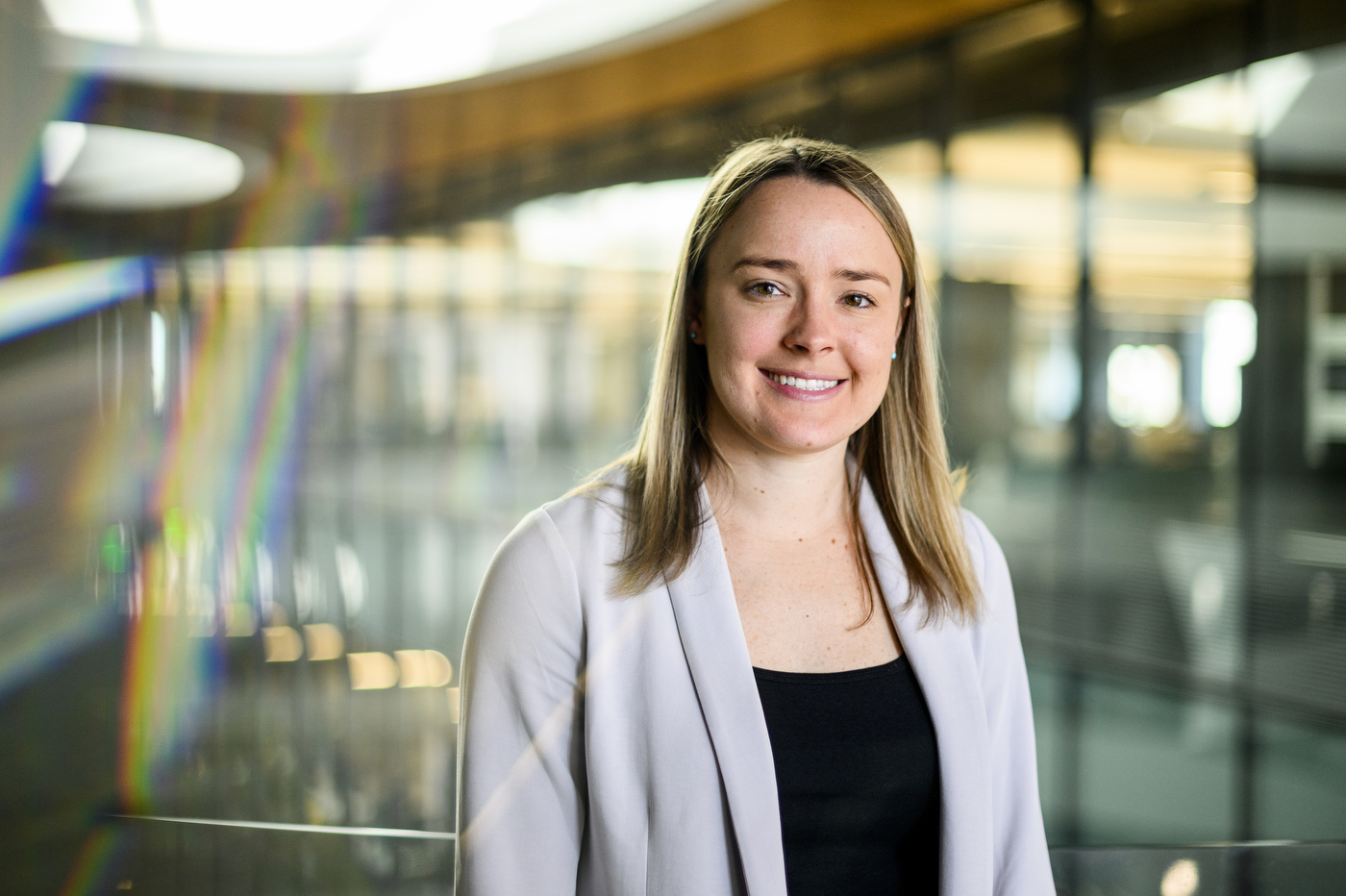Pandemic pounds are real. Northeastern study calls on public health officials to address the fitness quandary

The term “pandemic pounds” had already been coined when Lauren Raine and colleagues reopened their lab at Northeastern’s Center for Cognitive and Brain Health to participants in August of 2020.
Even so, they were taken aback by the stark differences a few months of isolation had made in the fitness levels of children and adults they study as part of a federal brain health research project.
“It had only been four to five months (of isolation) and people were drastically different,” Raine says.
She led a team of researchers in quantifying the results for a study published in Frontiers in Public Health that documented increases in the body mass index of participant groups studied before and during COVID shutdowns, as well as decreases in their cardiovascular fitness.
“I don’t think we quite realized the impact” of the shutdowns, when gyms were closed and even parks marked off by caution tape, says Raine, an assistant professor whose co-authors include Northeastern’s Arthur Kramer and Charles Hillman.

Steps taken to reduce people’s exposure to the novel coronavirus may have inadvertently reduced their physical activity levels to the point of unhealthiness, says Raine, who works in the department of physical therapy, movement and rehabilitation sciences and the department of medical science.
“People in the physical therapy department will tell you that if you stop exercising, you see declines very quickly,” she says.
“But people in the general population may say, ‘What’s the big deal if I sat around for two weeks?’” Raine says. “It is a big deal.”
Cardiovascular fitness measured as participants exercised on a treadmill showed the level for older adults declined by 30%. For children, the decline was even worse—53%.
Her study compared the aerobic capacity and body mass index of 493 adults aged 65-80 before the pandemic with 100 adults in that age range during the pandemic.
The children were all located within one-hour’s drive of Boston, while the adults were located at three sites in Boston, Kansas and Pittsburgh, Raine says.
Body mass index also rose in both age groups, she says.
In older adults it went from 29.5 to 31.3, which “is definitely an increase,” Raine says.
In children, BMI went from 18 to 19.3, but she says it’s tricky to assess the significance of that gain due to children’s rapid growth rates and changing body composition.
What’s concerning is that previous reports indicate children in the heaviest weight categories seem to bear the brunt of the shutdown BMI increases, and “our data falls into line with that,” says Raine
Collaborative ongoing research measures health metrics on the two age groups for National Institutes of Health funded research on exercise and brain health.
Americans—old and young—were suffering high rates of overweight and obesity before the pandemic, she points out, adding that public health strategies should emphasize not just regaining but overtaking lost ground.
“We need to have some public health strategies to help people get back on the right trajectory,” Raine says.
And before the next pandemic appears on the horizon, there should be plans on how to prevent loss of fitness, Raine says.
It won’t be a one-size-fits all, she says.
Some families have access to online exercise classes, others don’t, Raine says. “We just have to be creative and thoughtful.”
Cynthia McCormick Hibbert is a Northeastern Global News reporter. Email her at c.hibbert@northeastern.edu or contact her on Twitter @HibbertCynthia






